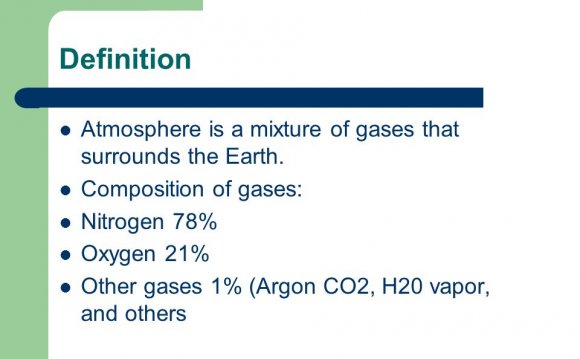
![water cycle: processes [Credit: Encyclopædia Britannica, Inc.]](/img/water_cycle_processes_credit_encyclopdia_britannica.jpg)
Major greenhouse gases
water cycle: processesEncyclopædia Britannica, Inc. Water vapour is the most potent of the greenhouse gases in Earth’s atmosphere, but its behaviour is fundamentally different from that of the other greenhouse gases. The primary role of water vapour is not as a direct agent of radiative forcing but rather as a climate feedback—that is, as a response within the climate system that influences the system’s continued activity. This distinction arises from the fact that the amount of water vapour in the atmosphere cannot, in general, be directly modified by human behaviour but is instead set by air temperatures. The warmer the surface, the greater the evaporation rate of water from the surface. As a result, increased evaporation leads to a greater concentration of water vapour in the lower atmosphere capable of absorbing infrared radiation and emitting it downward.
chemical precipitation: terrestrial carbon cycleEncyclopædia Britannica, Inc.Of the greenhouse gases, carbon dioxide (CO2) is most significant. Natural sources of atmospheric CO2 include outgassing from volcanoes, the combustion and natural decay of organic matter, and respiration by aerobic (oxygen-using) organisms. These sources are balanced, on average, by a set of physical, chemical, or biological processes, called “sinks, ” that tend to remove CO2 from the atmosphere. Significant natural sinks include terrestrial vegetation, which takes up CO2 during the process of photosynthesis.
A number of oceanic processes also act as carbon sinks. One such process, called the “solubility pump, ” involves the descent of surface sea water containing dissolved CO2. Another process, the “biological pump, ” involves the uptake of dissolved CO2 by marine vegetation and phytoplankton (small, free-floating, photosynthetic organisms) living in the upper ocean or by other marine organisms that use CO2 to build skeletons and other structures made of calcium carbonate (CaCO3).![carbon dioxide and climate change [Credit: Encyclopædia Britannica, Inc.]](/img/carbon_dioxide_and_climate_change_credit.jpg) As these organisms expire and fall to the ocean floor, the carbon they contain is transported downward and eventually buried at depth. A long-term balance between these natural sources and sinks leads to the background, or natural, level of CO2 in the atmosphere.
As these organisms expire and fall to the ocean floor, the carbon they contain is transported downward and eventually buried at depth. A long-term balance between these natural sources and sinks leads to the background, or natural, level of CO2 in the atmosphere.
In contrast, human activities increase atmospheric CO2 levels primarily through the burning of fossil fuels (principally oil and coal, and secondarily natural gas, for use in transportation, heating, and the production of electricity) and through the production of cement. Other anthropogenic sources include the burning of forests and the clearing of land. Anthropogenic emissions currently account for the annual release of about 7 gigatons (7 billion tons) of carbon into the atmosphere. Anthropogenic emissions are equal to approximately 3 percent of the total emissions of CO2 by natural sources, and this amplified carbon load from human activities far exceeds the offsetting capacity of natural sinks (by perhaps as much as 2–3 gigatons per year). CO2 has consequently accumulated in the atmosphere at an average rate of 1.4 parts per million (ppm) by volume per year between 1959 and 2006, and this rate of accumulation has been linear (that is, uniform over time). However, certain current sinks, such as the oceans, could become sources in the future. This may lead to a situation in which the concentration of atmospheric CO2 builds at an exponential rate.
![atmospheric brown cloud: global mean radiative forcings since 1750 [Credit: ]](/img/atmospheric_brown_cloud_global_mean_radiative.jpg) The natural background level of carbon dioxide varies on timescales of millions of years due to slow changes in outgassing through volcanic activity. For example, roughly 100 million years ago, during the Cretaceous Period, CO2 concentrations appear to have been several times higher than today (perhaps close to 2, 000 ppm). Over the past 700, 000 years, CO2 concentrations have varied over a far smaller range (between roughly 180 and 300 ppm) in association with the same Earth orbital effects linked to the coming and going of the ice ages of the Pleistocene epoch. By the early 21st century, CO2 levels reached 384 ppm, which is approximately 37 percent above the natural background level of roughly 280 ppm that existed at the beginning of the Industrial Revolution. According to ice core measurements, this level (384 ppm) is believed to be the highest in at least 650, 000 years.
The natural background level of carbon dioxide varies on timescales of millions of years due to slow changes in outgassing through volcanic activity. For example, roughly 100 million years ago, during the Cretaceous Period, CO2 concentrations appear to have been several times higher than today (perhaps close to 2, 000 ppm). Over the past 700, 000 years, CO2 concentrations have varied over a far smaller range (between roughly 180 and 300 ppm) in association with the same Earth orbital effects linked to the coming and going of the ice ages of the Pleistocene epoch. By the early 21st century, CO2 levels reached 384 ppm, which is approximately 37 percent above the natural background level of roughly 280 ppm that existed at the beginning of the Industrial Revolution. According to ice core measurements, this level (384 ppm) is believed to be the highest in at least 650, 000 years.
![chemical precipitation: terrestrial carbon cycle [Credit: Encyclopædia Britannica, Inc.]](/img/chemical_precipitation_terrestrial_carbon_cycle_credit.jpg)
![carbon dioxide emissions [Credit: ]](/img/carbon_dioxide_emissions_credit.jpg)
YOU MIGHT ALSO LIKE












